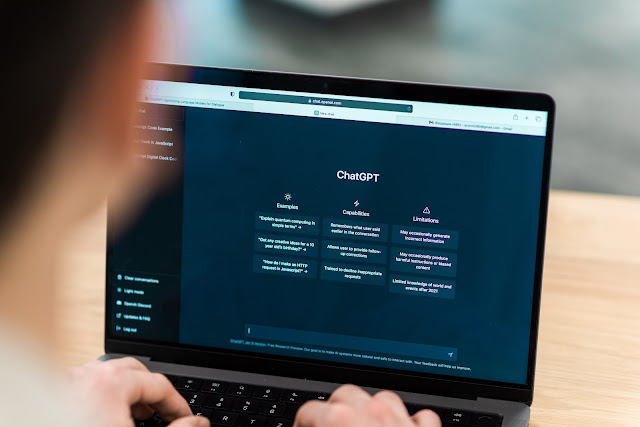Staff Augmentation: Your FAQs Answered!
This article serves as a solution providers on staff augmentation, answering typical questions and providing helpful background on this adaptable employment strategy. Let's dive in and find out the solutions to your problems!
What is the difference between IT staff augmentation and IT outsourcing?
IT staff augmentation involves adding external professionals to
an organization’s IT team for temporary or project-specific needs, providing
additional expertise and resources. It allows scalability without long-term
commitments. On the other hand, IT outsourcing delegates specific IT functions
to an external service provider, who manages and delivers the services. Control
and ownership differ: staff augmentation retains organization control, while
outsourcing transfers operational and managerial responsibilities to the
provider. Staff augmentation offers flexibility, specialized skills, and
knowledge transfer, while outsourcing provides cost savings, access to talent,
and focus on core business. The choice depends on an organization’s needs and
goals.
What industries can benefit from staff augmentation?
Staff augmentation can benefit industries that rely heavily on
information technology and require specialized skills and resources. Industries
such as software development, IT consulting, cybersecurity, e-commerce,
healthcare, finance, telecommunications, and manufacturing can all benefit from
staff augmentation. In software development, augmenting the team with
specialized developers can accelerate project timelines. IT consulting firms
can leverage augmented staff to meet the specific needs of their clients.
Cybersecurity industries can augment their teams with experts to enhance data
protection. E-commerce businesses can scale their IT operations during peak
periods. Healthcare and finance industries can utilize augmented staff for
compliance, data analysis, and system implementation. Telecommunications and
manufacturing sectors can benefit from additional infrastructure management and
process optimization IT resources. Overall, staff augmentation provides
flexibility and access to specialized skills for organizations across various
industries.
How do I choose the right IT staff augmentation partner for my business?
Choosing the right IT staff augmentation partner for your
business involves careful consideration of several factors. Here are some steps
to help you make an informed decision:
Assess your needs:
Determine the IT skills, expertise, and resources required for your project or
business objectives. Identify the areas where you need augmentation support.
Define your criteria:
Create a list of criteria that are important to you, such as industry
experience, technical proficiency, communication skills, cultural fit, and
scalability. This will serve as a guideline for evaluating potential partners.
Conduct research:
Research and identify reputable IT staff augmentation providers. Look for
companies with a track record of successful projects, positive client feedback,
and expertise in your industry.
Evaluate expertise and experience:
Review the provider’s portfolio, case studies, and client references. Assess
their experience handling similar projects or technologies and ensure their
expertise aligns with your requirements.
Communication and collaboration:
Assess their communication channels and responsiveness. A reliable partner
should have clear channels for collaboration, timely updates, and effective
project management.
Flexibility and scalability:
Consider the provider’s ability to scale resources based on your changing
needs. Flexibility in resource allocation is crucial to adapt to project
demands and timelines.
Cost-effectiveness:
Evaluate the provider’s pricing structure and compare it with industry
standards. Balance cost considerations with the quality and expertise offered.
Legal and contractual aspects:
Review contracts and service-level agreements (SLAs) carefully. Ensure the
terms and conditions align with your expectations and protect your interests.
Cultural fit: Consider
the compatibility of work cultures and values between your organization and the
potential partner. A good cultural fit fosters collaboration and effective
teamwork.
Pilot project or trial period: Consider starting with a
small-scale project or trial period to evaluate the partner’s performance,
communication, and overall compatibility before committing to a long-term
engagement.
By following these steps and conducting thorough evaluations, you
can choose the right IT staff augmentation partner that best aligns with your
business needs and goals.
Can IT staff augmentation be used for short-term projects?
Yes, IT staff augmentation can be effectively used for short-term
projects. One of the critical advantages of staff augmentation is its
flexibility in terms of engagement duration. Organizations can temporarily
bring in external professionals to meet short-term projects’ specific needs.
Whether it’s a software development project, infrastructure upgrade, or system
implementation, augmenting the existing IT team with specialized skills and
resources can provide the necessary expertise and support for the project’s
duration. Once the project is completed, the augmented staff can be
transitioned out, allowing the organization to scale down its IT capabilities as
needed.
What measures should ensure data security when engaging in IT staff
augmentation?
To ensure data security when engaging in IT staff augmentation,
several measures should be taken:
Implement strong access controls:
Define and enforce strict access controls for data and systems, granting
permissions only to authorized personnel.
Non-disclosure agreements (NDAs): Require all staff augmentation
professionals to sign NDAs, legally binding them to maintain the
confidentiality of sensitive data.
Secure data transmission:
Ensure data transmission between the augmented staff and internal systems is
encrypted and protected using secure protocols.
Regular security training:
Provide security awareness training to augmented staff, educating them on best
practices, data protection, and potential risks.
Monitor and audit activities:
Implement monitoring and auditing mechanisms to track the activities of
augmented staff and identify any suspicious or unauthorized behaviour.
Background checks:
Conduct thorough background checks on the augmented staff to ensure their
trustworthiness and reliability.
Compliance with regulations:
Ensure that the augmented staff and the provider comply with relevant data
protection regulations, such as GDPR or HIPAA, depending on your industry.
By implementing these measures, businesses can enhance data
security and minimize the risks associated with IT staff augmentation.
How does staff augmentation differ from traditional outsourcing?
Staff augmentation involves adding external professionals to the
existing internal team temporarily. The augmented staff members work alongside
the internal team, allowing the organization to retain control,
decision-making, and project ownership.
Traditional outsourcing, on the other hand, involves delegating
specific IT functions or processes to an external service provider. The service
provider assumes full responsibility for managing and delivering the outsourced
services. This often includes transferring control and decision-making to the
provider.
The organization maintains control and integration in staff
augmentation, while outsourcing relinquishes control and transfers
responsibilities to the service provider. The choice depends on the desired
level of control, project scope, and long-term objectives of the organization.
How can businesses ensure smooth collaboration between augmented staff and
in-house teams?
To ensure smooth collaboration between augmented staff and
in-house teams, businesses can take the following steps:
Clearly define roles and responsibilities: Clearly communicate
the roles and responsibilities of the augmented staff and the in-house teams.
Ensure everyone understands their specific tasks and how they fit into the
overall project or workflow.
Foster effective communication:
Establish clear communication channels and tools for all team members to
facilitate regular and transparent communication. Encourage open dialogue,
active listening, and timely information sharing.
Promote teamwork and collaboration:
Encourage a collaborative culture where augmented staff and in-house teams work
together as a unified unit. Foster a supportive environment that values
teamwork, knowledge sharing, and mutual respect.
Provide orientation and integration:
Offer orientation sessions or onboarding programs to help augmented staff
integrate into the in-house teams. Facilitate introductions, establish common
goals, and encourage relationship building.
Encourage knowledge transfer:
Encourage knowledge sharing between augmented staff and in-house teams.
Facilitate cross-training opportunities, organize workshops, or set up
mentorship programs to promote knowledge transfer and skills development.
Establish transparent project management
processes: Implement effective processes that clarify project
timelines, deliverables, and milestones. Ensure that all team members are aware
of project goals and objectives.
Regularly evaluate and address challenges: Conduct periodic
evaluations to identify any collaboration challenges and address them promptly.
Proactively address conflicts, resolve issues, and provide support to ensure a
productive working environment.
Foster a positive work culture:
Create a positive one that promotes collaboration, teamwork, and appreciation
for contributions from augmented staff and in-house teams. Recognize and
celebrate achievements to boost morale.
By implementing these measures, businesses can foster smooth
collaboration between augmented staff and in-house teams, leading to enhanced
productivity, efficient workflows, and successful project outcomes.
What factors should organizations consider when selecting a staff
augmentation partner?
When selecting a staff augmentation partner, organizations should
consider several factors:
Expertise and skills:
Evaluate the partner’s expertise and skills in the specific areas required for
your project or business needs.
Industry knowledge: Look
for a partner with experience and understanding of your industry, as they will
better comprehend your unique challenges and requirements.
Reputation and track record:
Research the partner’s reputation, review client testimonials, and assess their
track record in delivering successful projects.
Communication and collaboration:
Assess their communication channels, responsiveness, and ability to collaborate
effectively with your internal team.
Scalability: Ensure the
partner can scale resources to meet your evolving needs and accommodate project
growth.
Cultural fit: Consider
the compatibility of work cultures and values between your organization and the
potential partner to foster smooth collaboration.
Data security measures:
Evaluate their practices and ensure they have robust measures to protect your
sensitive information.
Contractual terms: Review
contracts, service-level agreements (SLAs), and pricing structures to ensure
they align with your requirements and budget.
Client references:
Request client references to gain insights into the partner’s performance,
reliability, and client satisfaction.
By carefully considering these factors, organizations can select
a staff augmentation partner that aligns with their needs and goals and can
contribute to the successful execution of projects.




Comments
Post a Comment